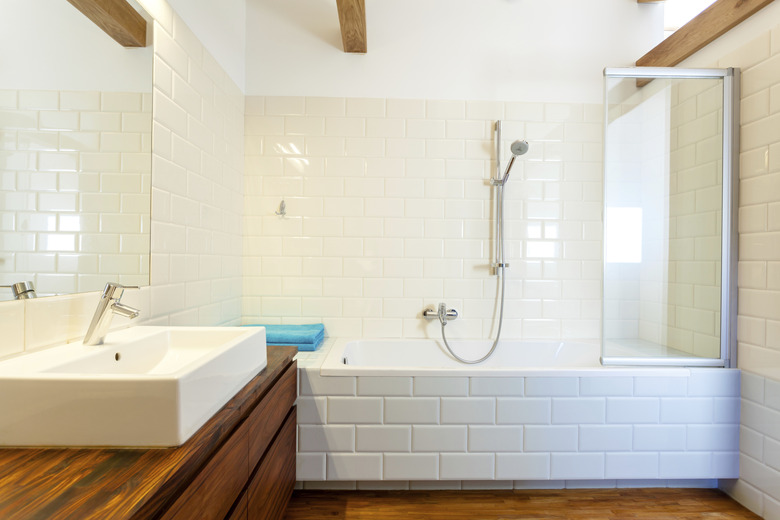How To Install A Bathtub In Mortar
We may receive a commission on purchases made from links.
Unlike cast-iron and steel bathtubs, which are rigid and self-supporting and often come installed in a frame, acrylic and fiberglass bathtubs need extra support underneath to prevent flexing, and this is typically supplied by a mortar bed. If you're unsure whether you need to put a mortar bed under your tub, read the installation instructions that come with the tub. If one is required, the instructions will say so, and if they don't, the tub is designed to be installed without one.
Preparing to Lay Mortar
Preparing to Lay Mortar
Once you lay your bathtub in fresh mortar, it's there to stay, so all the other steps of the bathtub installation procedure should be completed. This includes leveling and reinforcement of the subfloor, construction of the framing surrounding the tub and installation of the drain rough-in. The faucet plumbing goes in the wall next to the tub and can be completed after the tub is in place.
An important part of the tub framing are support ledges for the tub flanges. For an alcove-style tub, these are typically horizontal lengths of 2-by-4-inch lumber fastened to the studs with their top edges at the same height above the floor as the undersides of the L-shaped flanges. When installing these, make sure they're level.
Because the mortar bed needs to be 2 to 4 inches thick, it's a good idea to install these supports about an inch higher than you would if the tub were sitting on the floor. That way, when setting the tub, you'll be able to work it into the wet mortar until the flanges rest on the support ledges without displacing too much mortar. If your tub comes with wooden runners, you don't need to make this adjustment to the support braces, because the mortar bed just has to be thick enough to fill the gap between the bottom of the tub and the bottoms of the runners.
Mixing and Setting Mortar
Mixing and Setting Mortar
Before you mix the mortar with water, you'll want to dry-fit the bathtub and trace an outline of the part that touches the floor so you know where to put the mortar. The mortar you need for this project is basically a mixture of 4 parts sand to 1 part Portland cement. You can mix your own, but it's a lot easier to simply purchase an all-purpose mortar mix.
Mix the mortar with water in a wheelbarrow to make a stiff, grainy mixture that will hold its shape. Shovel it into the outline and level it to a thickness of 2 to 4 inches. You don't have to spend a lot of time leveling; just make sure there are no unusually high places and no voids.
Installing the Bathtub
Installing the Bathtub
Install the bathtub while the mortar is fresh. Set it down gently until it makes contact with the mortar; then stand in the tub and move your weight back and forth to force the tub down into the mortar until the edges make contact with the supports on the sides of the frame. Check the level of the tub in both directions using a 4-foot level, and adjust as needed by shifting your weight.
When the tub is level and the edges flush against the support braces, put some weight in the tub to keep it in place while the mortar sets. If you're able to connect the drain without disturbing the tub, you can fill the tub with water. Otherwise, distribute three or four 50-pound bags of sand or cement mix on the bottom of the tub. Check the level one last time; then wait overnight for the mortar to set.
